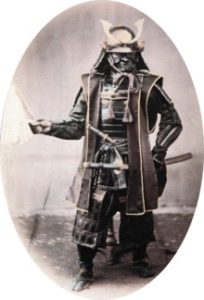Bushido (the way of the warrior) was a code of conduct for the samurai (warrior) class in Japan, which has been compared to the medieval chivalric code of Western Europe. It incorporated many of the aspects of chivalry, such as courtesy toward women, strong spirituality and no fear of death. It became the basis for the philosophy of education for Japanese of all classes and formed a large part of the training and discipline of the Japanese Army officer class.
Incorporating the mysticism, asceticism and self-denial of Zen Buddhism, the harsh discipline of Bushido required the absolute loyalty of the soldier, who was trained to fight to the death for the Emperor. A soldier’s duty was to endure death rather than surrender. Surrender was the ultimate shame.
In defeat, they were encouraged to commit “seppuku” (the formal term for hara-kiri), ritual suicide. The ritual never varied. Kneeling down, the soldier would thrust his sword into his abdomen, making ritual cuts to the right then up and down in such a way as to disembowel himself. Opening the stomach would release the soul, which was believed to reside there. A “second” would stand behind him with a drawn sword. He would quickly end the suffering by beheading the soldier.
The code accounts for the fanatic Japanese fighting mentality in the Pacific theatre in WWII. It also accounts for the brutal treatment of 150000 Allied POWs, who were considered moral failures and cowards. The POWs angered their captors by not demonstrating a sufficient sense of shame for surrendering. They were regarded as contemptible and sub-human.
Many Japanese intellectuals felt that the purity of The Bushido Code was perverted during WW II by the group of military extremists who allowed atrocities to be committed on POWs.

